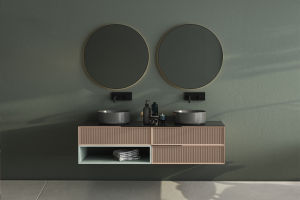As more and more people begin to prioritize the aesthetics and comfort of their homes, plants are becoming a magical addition to boost the green atmosphere and unique style of any living space.
By using potted plants, we can fill our homes with life and bring in unique indoor decor styles. But how do we choose the right plants, where do we place them to achieve the best effect, and how do we care for these green companions?
In this article, we will explore these key topics, so you can create a cozy, lively, and unique green space at home.
How to decorate old planters into new | 5 DIY Plants pot makeover ideas | Garden Decor Part 1
video by Grateful Art
Choosing the Right Plants for Your Space
When selecting potted plants, the first thing to consider is the plant species. Common indoor plants include succulents, ferns, and monstera. Different plants thrive in different environments, so it's important to know your home's lighting and humidity conditions before choosing. For instance, succulents do well in bright light and don’t require much water, while ferns prefer cooler, more humid environments.
Additionally, consider the growth habits of the plants. Monstera, for example, thrives in spacious areas like the corners of living rooms, where it can grow large and become a focal point. Mini orchids, on the other hand, are perfect for tables or bookshelves, adding elegance to smaller spaces.
In short, picking the right plants for your living environment makes it easier to care for them and allows them to flourish, adding endless greenery to your home.
The Art of Plant Placement
Plant placement is essential for showcasing unique style and enhancing the beauty of your indoor space. First, pay attention to pairing plants of different heights and sizes. This layering effect can make the space look richer and more interesting.
A common technique is placing taller plants in corners or background areas while smaller plants should be placed in more prominent positions, such as on coffee tables, bookshelves, or windowsills. Mixing different plant types together can make the display more natural and dynamic. For example, group succulents together with ferns to create a mini tropical rainforest effect.
Also, don’t forget about the color and shape of your pots. Green plants can be paired with flowering plants to add vibrant colors and focal points to the room. Plant placement should also consider the flow of the space; avoid placing them in high-traffic areas where they might disrupt the visual or practical use of the space.
Caring for Your Plants
Taking care of your plants requires some knowledge and time, but once you master the basics, you'll be able to help them thrive. The first key element is watering. Succulents don't need much water—just water them every so often. On the other hand, plants that require more moisture should have their soil kept moist without waterlogging.
Light is another crucial factor. Most plants prefer ample sunlight, but there are some plants, like ferns and certain orchids, that thrive in low-light conditions. When placing plants in your home, consider their light needs and place them in appropriate locations.
Regular pruning and fertilizing are also essential to maintaining plant health. Pruning helps promote growth and keeps plants looking lush, while fertilizing should be done based on the needs of each plant. Organic fertilizers are a great choice because they are more eco-friendly and beneficial for the plants.
The Versatility of Potted Plants
In addition to their decorative value, potted plants offer many other benefits. First, plants can improve indoor air quality by absorbing harmful gases and releasing oxygen, making the air fresher. Examples include spider plants and snake plants.
Moreover, plants have psychological benefits. Numerous studies show that interacting with plants can reduce stress and improve mood. So, placing a plant in your workspace can not only boost productivity but also create a positive atmosphere.
Lastly, potted plants can serve as distinctive elements in various home decor styles. For modern homes, choose minimalist pots, while a garden-style home might benefit from more rustic or whimsical plant choices.
Tips for Making Plants the Focal Point
To make your potted plants the highlight of your home, there are a few practical tricks you can use. Start by choosing unique pots—an eye-catching planter can instantly enhance the decorative effect of your plants. You can select materials and colors that match the overall style of the room.
Next, consider using plant stands or hanging baskets to give plants more visibility, especially in spaces with limited floor area. Hanging plants like ivy or spider plants not only save space but also add a 3D element to your decor.
Additionally, DIY decorations can help personalize your plants. For example, adding colorful pebbles, mini sculptures, or small trinkets can transform them into unique pieces of art.
Finally, don’t forget to rotate and reposition your plants regularly. This simple act keeps your space feeling fresh and ensures that your indoor greenery stays vibrant throughout the seasons.
With these tips and techniques, we can create a green, inviting space in our homes, where plants become a stunning focal point that breathes life into the environment. Happy planting, Lykkers!


